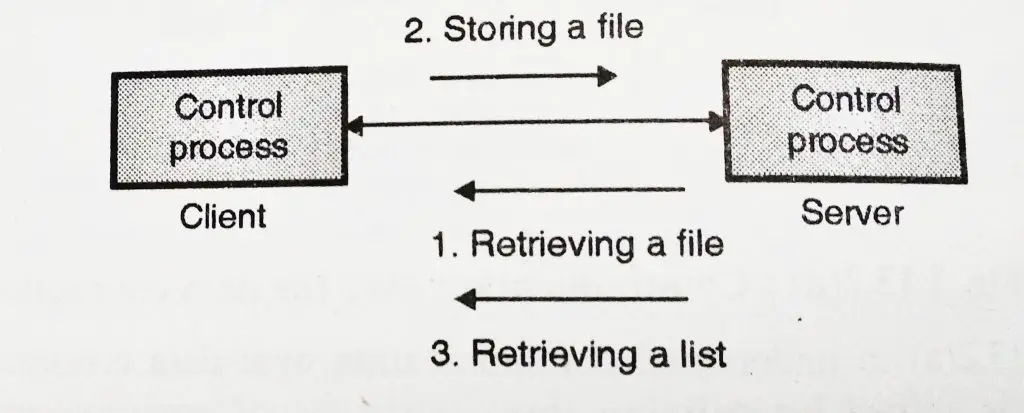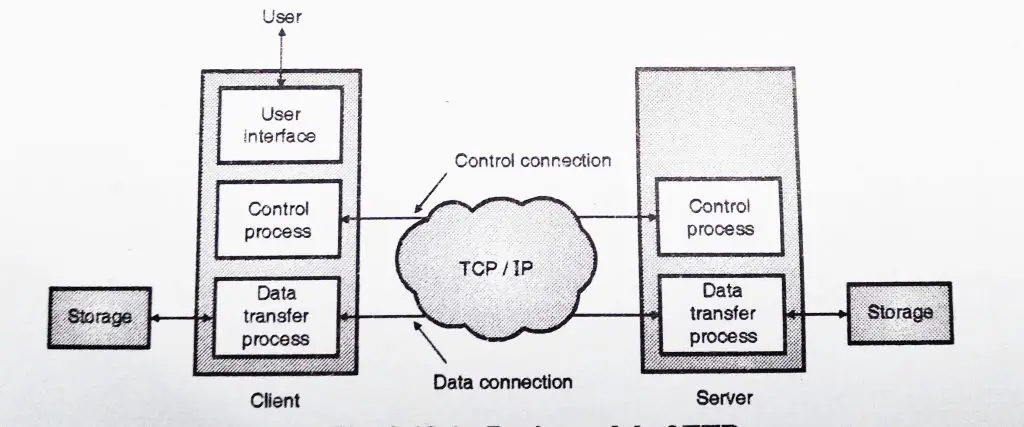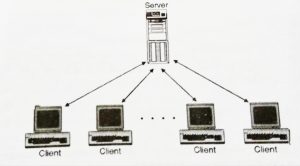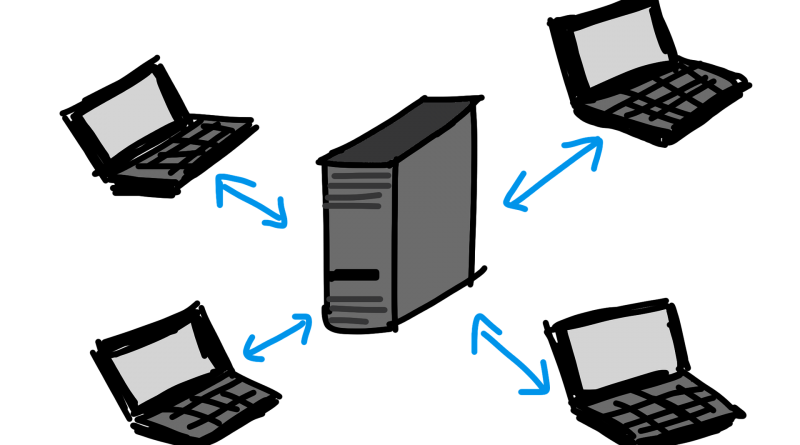Computer Network – Peer to Peer Network And Client Server Technology (Computer Server based Network)
In my previous post , we have seen the classification of any network-based upon its geographical configurations (LAN,MAN,WAN,PAN and CAN). Now we are going to explore the next important classification of any network-based upon the role played by the components present in the network.
The passing of any data and network information down through the layers of the sending device and back up through the layers of the receiving device is made possible by an interface between each of the pairs of adjacent layers.
Each interface defines the information and services a layer must provide for the layer above it(if you are interested in understanding this concept in detail , you may refer to my next post i.e OSI layer).
There should be some association between the computer(or any device) and other devices present in the network.Depending upon this relationship between the PC and the devices in any network, we have mainly two types of network :
- Peer to peer networks
- Client-server networks
Now in the subsequent sections, we will dig deep inside these two concepts. We can say(in layman terms) that Peer to peer network basically deals with a company that uses decentralized management in which any decisions are made locally , whereas, in a Client server network , there is centralized management where any decision is made centrally in a central location.
Peer to Peer Networks (P2P Network)
Ideally in this type of network configuration, each device in the network is responsible for making own resources available to other computers in the network.
In simple terms, we can say that if any user logged in one peer(device) in the network , then the user can access any resources(devices etc) that are present in the network which is not controlled by any specific password . Thus they don’t have any central controlling device .
At the physical layer, communication is direct i.e device A sends a stream of bits to device B (through intermediate nodes). At the higher layers, however, communication must move down through the layers on device A, over to device B.
Each layer in the sending device mainly adds its own information to the message it receives from the layer just above it and passes it downwards to the whole package to the layer just below it. At each layer a header, or possibly a trailer(also check how a message propagates through layers in my next post).
There are no servers present in this type of network.Since there is no central security, the user will have to know an individual password to access each password-protected device present in the network.Thus each device maintains its own security settings and this type of network best suitable for a network containing fewer devices(less than 10) on a single LAN.
Thus this is also cost-effective as no additional servers or software required to set up this type of network. After learning all the features of this type of network, now eventually an important question may arise in your mind :
When to use this type of network?
- If you want a cost-effective yet efficient way of connecting all the devices in a network.
- If network security is not an important issue.
- If all the users are situated in the same area and they are less in number.

Now let us see some of merits of this type of network set up:
Advantages of Peer to peer network:
- Easy setup and lower cost of operation for small networks.
- No server hardware required and also users can control resource sharing.
- More Built in Redundancy : Due to small network size(with 10 – 20 workstations) and each device contains some important data, if one fails we still have most of our shared resources available .
- Easy to administer : In this type of network , each machine perform its own administration.
- No NOS required : Peer to peer network don’t require any NOS(network operating system) .
Disadvantages of Peer to peer networks:
Less security : this network operates on common desktops operating system like windows which are not very secure operating systems.
Traditional LANs, such as Ethernet, are connection-less protocols. A station then sends data packets to another station whenever the packets are ready. There is no connection establishment or connection termination phase.(thus less secure)
No centralized management system(like in client-server model) , thus it makes large peer networks hard to manage data efficiently.
Individual performance is affected : Due to resource sharing between all the devices , the individual performance of a particular workstation will get affected.
Traditional LANs, such as Ethernet, can both multicast and broadcast packets; a station can send packets to a group of stations or to all stations. There is no easy way to multicast or broadcast on an ATM network although point-to-multi point connections are available.
The additional load on the computer due to the absence of a server and resource sharing .
Difficult to maintain version control : In this network, files are stored on number of different workstations.So difficult to manage different document versions or files.
Client Server Technology (Server Based Network)
As the name suggests, in this type a device will act as a server, and other act as clients. Basically the main function of the server computer is to furnish the resources available and provides access to these resources to other computers when they (client computers) request for it.
Client-server network typically uses a directory service to store information about the network and its users.In these networks,the processing tasks are divided between clients and servers . Clients request various services such as file sharing , file storage , printing etc and server computer will deliver them.
Moreover, in this network set up, the server will provide security and administration of the entire network . Multicasting and broadcasting require the use of another server called the broadcast unknown server (BUS).
If a station needs to send a frame to a group of stations or to every station, the frame first goes to the BUS, this server has permanent virtual connections to every station.
The server creates copies of the received frame and sends a copy to a group of stations or to all stations, simulating a multicasting or broadcasting process.
In a nutshell we can say that Client is individual workstations in the network , whereas Server is the central computer that is more powerful that clients and which allows the clients to access its software and database.Also no client can access the resources of the servers until it has been authenticated(permitted) by the server to do so.
Communication in Client-Server configuration
The client places a request on the server machine to access the resources available with the central server(computer).
The server responds to this and sends the signal accordingly to the client .The software runs in the client computer is called the client program. This software configures a specific computer to act as a client.
Further the software that runs in a server computer is called a server program. It configures that particular computer to act as server.

Advantages of Client-server network
Network Security : This is highly secure because all the shared resources are present in a centralized area and are administered centrally. Also the operating system runs on client-server are designed to provide better security to network.
Higher Reliability : Individual users don’t have to use or manage shared resources.Also speed and efficiency will increase as a single password allows access to all the shared resources.
Centralized backup : Data backup is much easier and faster too.
Disadvantages of Client server networks
- Lots of memory and disk space is required for a computer server.
- Expensive dedicated hardware needs to be used.
- Being a client server relationship, a professional network administrator is required for server workstation.

Some of the most important applications of client-server network include file transfer clients, printing , email clients ,web browsers etc.

Aric is a tech enthusiast , who love to write about the tech related products and ‘How To’ blogs . IT Engineer by profession , right now working in the Automation field in a Software product company . The other hobbies includes singing , trekking and writing blogs .




